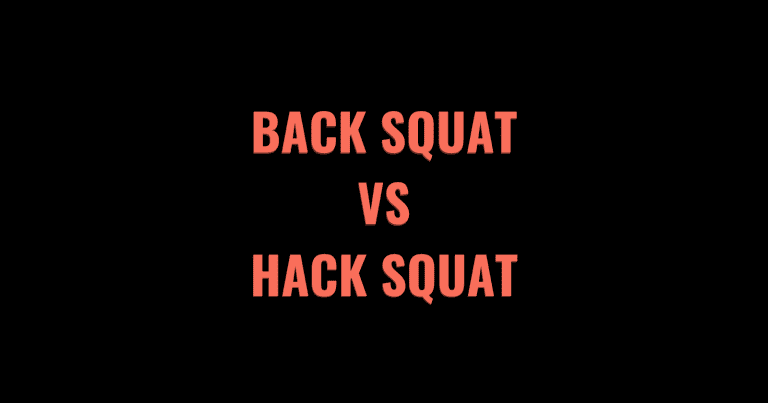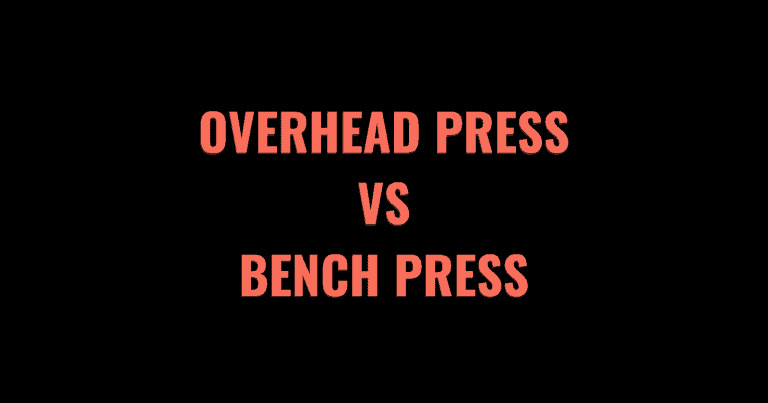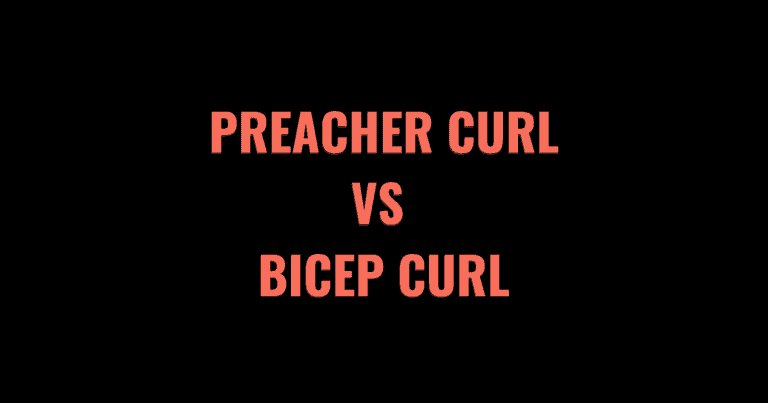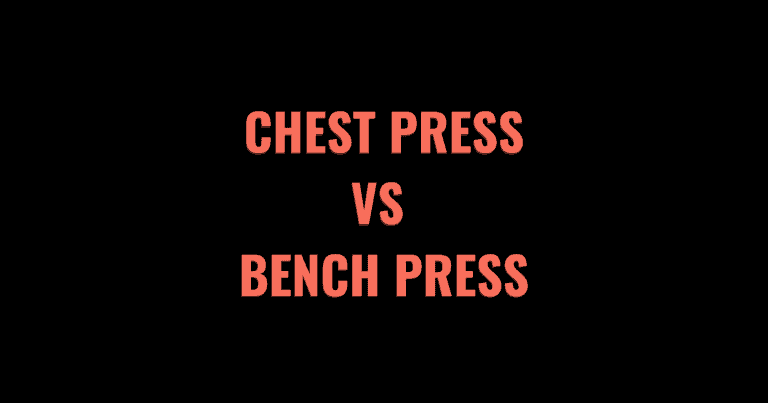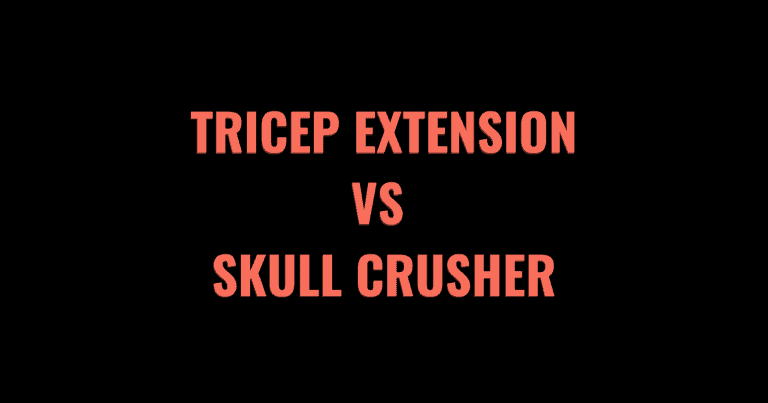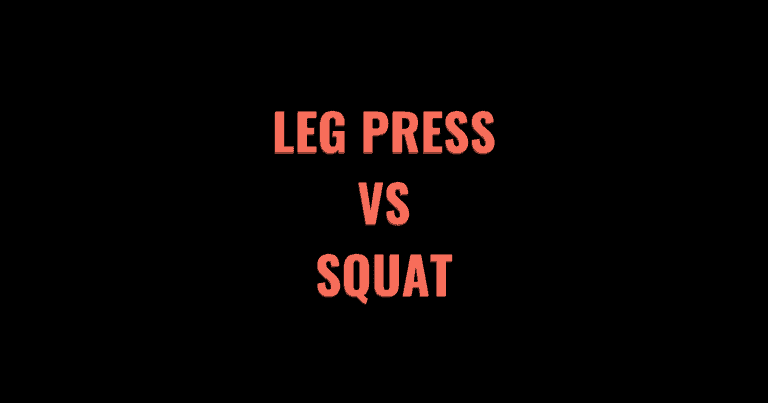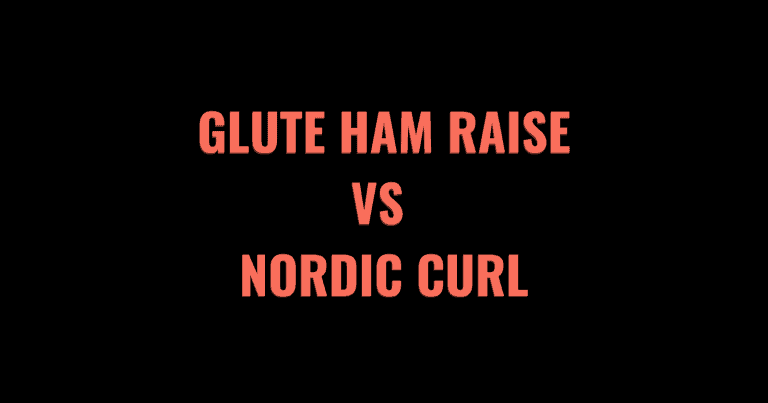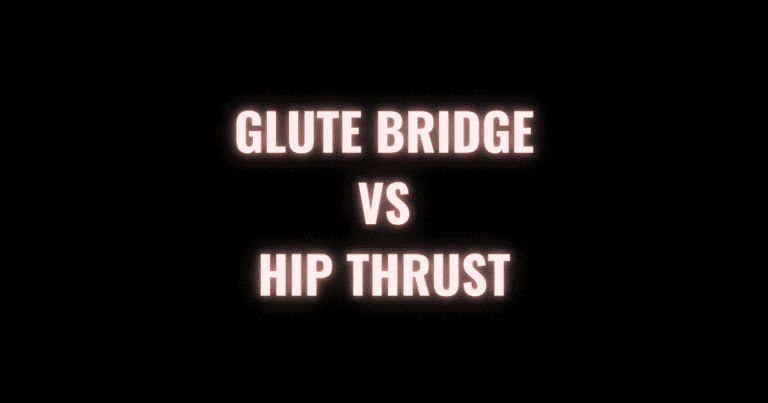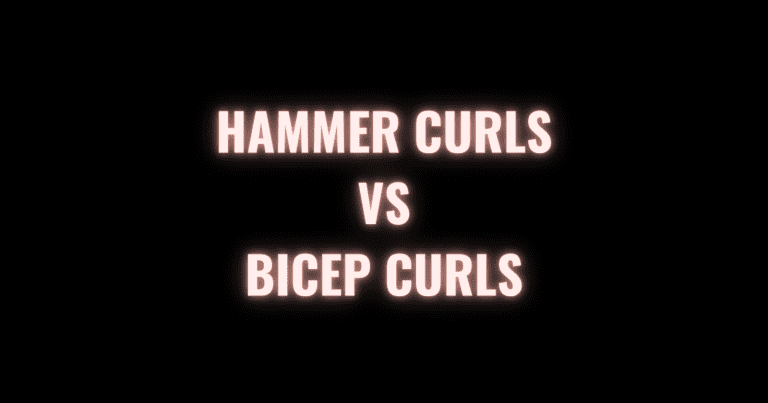If you want to build a strong and muscular back, you should consider making rows a staple in your training regimen. Rows help add thickness to your upper back, mid-back, and lats, whereas pulldowns create more width. This is why most bodybuilders perform some type of row along with a pulldown variation on a consistent basis to get the best possible results from their training.
There are several row variations. However, two of the most popular are bent-over barbell rows and chest-supported rows. Many old-school bodybuilders claim that you need to do barbell rows in order to grow your back, but that couldn’t be further from the truth. When it comes to building a bigger back, the barbell row is one of many effective exercises.
Both row variations are effective for building a bigger and stronger back, but one may be better than the other, depending on your goals, preferences, access to equipment, and biomechanics.
In this article, we are going to do an in-depth comparison of bent-over barbell rows versus chest-supported rows. More specifically, we’re going to highlight the main differences between these two exercises, the pros and cons of each, how to perform them properly, and different ways to program them in order to get the best results.
At the end of this article, you’ll be able to decide which row variation is worth adding to your workout routine.
Keep reading to find out more!
Here’s a great video from Scott Herman that covers many of the same concepts we summarize in this article:
Table of Contents
- 1 Barbell Rows vs T-Bar Rows
- 2 Pros and Cons
- 3 Exercise Form
- 4 Muscles Used
- 5 When to do an exercise
- 6 Bent-Over Barbell Row vs Chest-Supported T-Bar Row: Final Thoughts
- 7 FAQs
- 8 Other Exercise Comparison Posts
- 8.1 Hack Squats vs. Back Squats: Pros and Cons
- 8.2 Dips vs Bench Press: Pros & Cons
- 8.3 Overhead Press vs. Bench Press: Pros, Cons, & Differences
- 8.4 Preacher Curl vs Bicep Curl: Differences, Pros, and Cons
- 8.5 Bench Press vs Chest Press: Pros and Cons
- 8.6 Concentration Curl vs. Bicep Curl: Which Exercise Should I Be Doing?
- 8.7 Tricep Extension vs Skull Crusher: Pros and Cons
- 8.8 Leg Press vs. Squat: Differences, Pros, and Cons
- 8.9 Glute Ham Raise vs Nordic Curl: Differences and Benefits
- 8.10 Rack Pulls vs. Deadlifts: Differences, Pros, and Cons
- 8.11 Glute Bridge vs Hip Thrust: Differences & Benefits
- 8.12 Hammer Curls vs Bicep Curls: Which is Better?
- 9 References
Barbell Rows vs T-Bar Rows
What’s the primary difference between bent-over barbell rows and chest-supported rows?
The main difference between bent-over barbell rows and chest-supported t-bar rows is the barbell row uses more muscles. As a result, you’re typically stronger when performing the barbell row. This can help build more strength and muscle.
In particular, the bent-over barbell row uses more lower back and hamstring engagement. Since barbell rows are performed free-standing, the stabilizer muscles of the lower back and hamstrings are recruited to hold your torso in the proper position.
On the other hand, chest-supported rows are easier on the lower back, since the torso is supported against a bench. For increasing overall posterior chain strength and hypertrophy, the bent-over barbell row is a superior exercise compared to a chest-supported row.
With that said, chest-supported rows allow you to minimize lower back involvement and isolate the different muscles of the back to a much greater degree. It also reduces your ability to use momentum to move the weight from start to lockout, commonly known as cheating.
If back hypertrophy is your primary goal, it’s a good idea to incorporate chest-supported rows as opposed to bent-over barbell rows. But if you want to gain as much strength and size as possible across the entire posterior chain, then you can’t go wrong with bent-over barbell rows.
Before you choose between the chest-supported or bent-over row, let’s cover some pros and cons of each that will help you decide which one best suits your goals.
Pros and Cons
Bent-Over Barbell Row Benefits
Some benefits of barbell rows include:
- The bent-over barbell row is one of the most effective exercises for building strength and adding mass to the entire back. A 2018 study concluded that the bent-over row was the best exercise compared to seven other popular back exercises. They found that it activated three out of the five major back muscles to the greatest degree.
- Minimal equipment is required. All you need is a barbell, plates, and maybe some lifting straps to perform bent-over barbell rows.
- It’s a multi-joint, compound movement that works the entire posterior chain, including the hamstrings, lats, erectors, rhomboids, traps, teres minor, and teres major, as well as the core, biceps, and forearms.
- You can move a lot of weight, which is ideal for stimulating muscle growth.
- Bent over barbell rows also increases your grip strength. The stronger your grip is, the better you’ll be at other major exercises, such as deadlifts, cleans, snatches, and shrugs.
- Bent-over barbell rows will help you improve your starting position on the bench press since the lats are heavily involved in stabilization. Incorporating more rows may even lead to your next bench press PR.
- Bent-over barbell rows allow you to train explosively and are a more functional movement. Therefore, they are more tailored toward athletes.
- They teach you how to hip-hinge properly, which carries over to other lifts such as the deadlift and good mornings.
- They improve stability in the core and lower back.
Barbell Row Cons
Some disadvantages of barbell rows include:
- Grip strength is often a limiting factor. If your grip gives out before your back does, consider investing in some lifting straps.
- Greater lower back and hamstring involvement. For some people this may be positive, however, if you have lower back pain or struggle to get into the proper position to perform bent-over rows, this exercise won’t suit you well.
- They are more challenging to learn and execute compared to chest-supported rows.
- There’s a much greater chance that you will cheat by using momentum to move the weight, which takes the tension away from the back.
- Compared to chest-supported rows, they don’t isolate the back as well.
- They are more demanding, so it takes longer to recover. And, the extra lower back volume may negatively interfere with your squats or deadlifts.
- Higher injury risk is associated with bent-over barbell rows compared to chest-supported t-bar rows because they are more difficult to maintain proper form and there are more muscle groups involved.
- Your core and lower back may fatigue before the muscles you’re trying to target do.
Chest-Supported T-Bar Row Benefits
Some t-bar row benefits include:
- Less stress is placed on the lower back because the torso is supported.
- They allow you to isolate the back better than bent-over barbell rows.
- Chest supported rows are easier to recover from, allowing you to increase training volume.
- They are a great exercise for adding size and strength to the back.
- It may be easier to learn for some beginners compared to a bent-over barbell row.
- You’re less likely to cheat on a chest-supported t-bar row.
- There are various grips you can use to target different areas of the back.
- Since chest-supported rows also increase the size and strength of your back, they will also help improve your positioning on the bench press.
- It’s a great movement for overall shoulder health, function, and mobility. Many of us have a “forward shoulder” which can lead to increased injury risk. Doing more rows will help correct this.
- Chest-supported rows can also help increase your grip strength.
Chest-Supported T-Bar Row Cons
Some cons of chest-supported t-bars rows include:
- You can’t lift as much weight.
- Not every gym has a chest-supported t-bar row.
- It doesn’t engage as many muscles as a bent-over barbell row.
- Chest-supported rows don’t strengthen the core or lower back.
- They don’t have as much carry-over to other hip hinge movements, such as deadlifts and good mornings.
- Your grip may be a limiting factor, so consider buying lifting straps.
- Chest-supported t-bar rows aren’t as functional as bent-over barbell rows and they don’t lend themselves well to explosive training.
Exercise Form
How to do a Barbell Row correctly
- To do a barbell row you will need an Olympic barbell, Olympic plates, and two weight clips. It’s easiest to use a squat rack to set the barbell up, but you can start from the floor if a squat rack isn’t available. In this example, we will use the floor.
- Add an appropriate amount of weight to the barbell.
- Standing straight up, step forward toward the barbell until it’s just over your midfoot.
- With a shoulder-width stance, bend at the hips and knees while keeping your spine in a neutral position. Grab the barbell using a double overhand grip with a shoulder-width grip.
- Brace your core then stand straight up while holding onto the barbell.
- Push your hips backward while keeping your chest up until your torso is nearly parallel with the floor. The barbell should be in front of you with your arms fully extended. This is the starting position.
- Take a deep breath, brace your core and begin the movement by driving your elbows back and up to move the barbell towards your torso.
- Once the barbell touches your belly button, squeeze your shoulder blades together and pause for a moment before extending your arms back to the starting position.
- Repeat for the desired amount of reps.
- Do your best to keep a neutral spine and not let your elbows flare outward.
Watch this video from Renaissance Periodization to see how to perform a barbell row properly and eleven mistakes to avoid.
How to do a T-Bar Row correctly
- To do this exercise you will need a chest-supported t-bar row machine. As an alternative, you can use an incline bench and dumbbells.
- Load an appropriate amount of weight on the machine. Some machines allow you to adjust the foot platform, so set it so there’s a slight bend in your knees when your sternum is braced on the pad.
- Step onto the foot platform using a shoulder-width stance. Lean forward until your torso (sternum) is braced against the pad.
- With your arms fully extended, grab the handles with a pronated or neutral grip, depending on what feels most comfortable and what area of the back you want to emphasize.
- Unrack the t-bar and move it over until it’s centered with your body.
- Begin the movement by retracting the shoulders. Then, initiate the pull by driving your elbows back and down as far as you can.
- After a slight pause at the top of the movement, slowly lower the t-bar back to the starting position by extending your arms.
- Emphasize the stretch at the bottom, then repeat for the desired amount of reps.
- Just like the bent-over barbell row, make sure to keep a neutral spine and not let your elbows flare out.
Watch this video from Muscle Mentors to see how to perform a chest-supported t-bar row properly and what grips you can utilize to target different areas of the back.
Muscles Used
Barbell Row Muscles Targeted
Bent-over barbell rows primarily target the latissimus dorsi, rhomboids, teres minor, teres major, middle and lower traps, and rear delts, but they also engage the forearms, erectors, biceps, and core.
Primary
- Rhomboids
- Lats
- Traps
- Middle
- Lower
- Rear Delts
- Teres Major
- Teres Minor
Secondary
- Forearms
- Erectors
- Bicep Brachii
- Core
Chest-Supported T-Bar Row Muscles Targeted
Depending on your grip, chest-supported t-bar rows can be used to primarily target the lats or upper/mid back, including the rhomboids, middle and lower traps, rear delts, teres minor and major, and rear delts. Secondarily, the biceps and forearms are also engaged.
Here’s a list of the muscles worked by the t-bar row:
Primary
- Latissimus Dorsi
- Rhomboids
- Teres Minor
- Teres Major
- Rear Delts
- Traps
- Middle
- Lower
Secondary
- Biceps Brachii
- Forearms
When to do an exercise
When to do a Bent-Over Barbell Row
Anyone who wants to build size and strength in their entire posterior chain, especially their back, and doesn’t have a pre-existing low back injury or pain should consider doing bent-over barbell rows. Since bent-over barbell rows primarily target the back, they are usually performed during back, pull, or upper body workouts.
Bent-over barbell rows are great for increasing strength, power, and hypertrophy, so there are various rep ranges that can be utilized depending on your goal. Anywhere from 8-12 reps is great for building muscle, 4-6 reps is ideal for strength, and 1-5 reps may be useful for explosiveness/power when performed at a high speed.
The bent-over row should be done near the beginning of a workout since it’s a very demanding exercise. Be careful not to program a heavy bent-over barbell day before or after a lower-body workout because your hamstrings may be excessively fatigued.
When to do a Chest-Supported T-bar Row
Anyone that wants to grow their back while lowering the amount of stress placed on the lower back should consider doing chest-supported t-bar rows. Chest-supported t-bar rows are most commonly performed during upper body, pull, or back workouts.
Even though they aren’t as demanding as a bent-over row, you should still do them as the 1st, 2nd, or 3rd exercise. Chest-supported t-bar rows lend themselves well to hypertrophy, so stick to the 8-15 rep range and focus on perfecting the form, as well as mind-to-muscle connection.
If your back is a lagging body part, then it’s a good idea to train it more frequently. Based on your recovery capabilities, training back 2-3 times per week is likely ideal. But that doesn’t mean you should do heavy bent-over rows every back session unless you only train back once per week.
Instead, you should implement exercise variation by performing different back exercises. It just so happens to be that chest-supported t-bar rows are a great accessory movement to the bent-over barbell row. They allow you to add more volume without accumulating excessive fatigue in the lower back and hamstrings.
Bent-Over Barbell Row vs Chest-Supported T-Bar Row: Final Thoughts
It’s quite apparent that the bent-over barbell row is the king of all back exercises. Not only does it activate the most amount of back muscles to the greatest degree, but it also helps strengthen the core, hamstrings, forearms, biceps, and erectors. On top of that, all you need is a barbell and some plates to do this exercise, which every gym should have.
However, the chest-supported t-bar row still has a lot of benefits to offer that the bent-over barbell row does not. You can isolate different areas of the back by using various grips, there’s a lower chance of injury, and it’s nearly impossible to cheat the movement.
Furthermore, it completely takes your lower back out of the movement, which is very advantageous for those with lower back pain or injury. Many of the best bodybuilders in the world incorporate both of these back exercises into their routine, and for good reason.
They complement each other well and are among the most effective exercises you can do for your back. Consider adding both of them into your routine!
FAQs
The barbell row activates many large muscle groups and stabilizing muscles simultaneously, making it a very efficient exercise. It can also be loaded quite heavily, which makes it an excellent exercise for building strength.
A key advantage of the chest supported t-bar row is that it is less strenuous on the lower back and hamstrings when compared to the barbell row. This accommodation can be useful for people recovering from injuries or those who have already fatigued those muscles earlier in a training session. It can also make it easier to train the back muscles to failure, which aids back hypertrophy.
Barbell rows activate more muscles than t-bar rows. As a result, they’re more advantageous than t-bar rows for building strength and growing muscle.
Other Exercise Comparison Posts
If you enjoyed this post, check out our comparisons of other popular exercises below.
References
Edelburg. H. et al. April, 2018. “ACE Sponsored Research: What is the best back exercise?” ACE Fitness. https://www.acefitness.org/continuing-education/certified/april-2018/6959/ace-sponsored-research-what-is-the-best-back-exercise/
